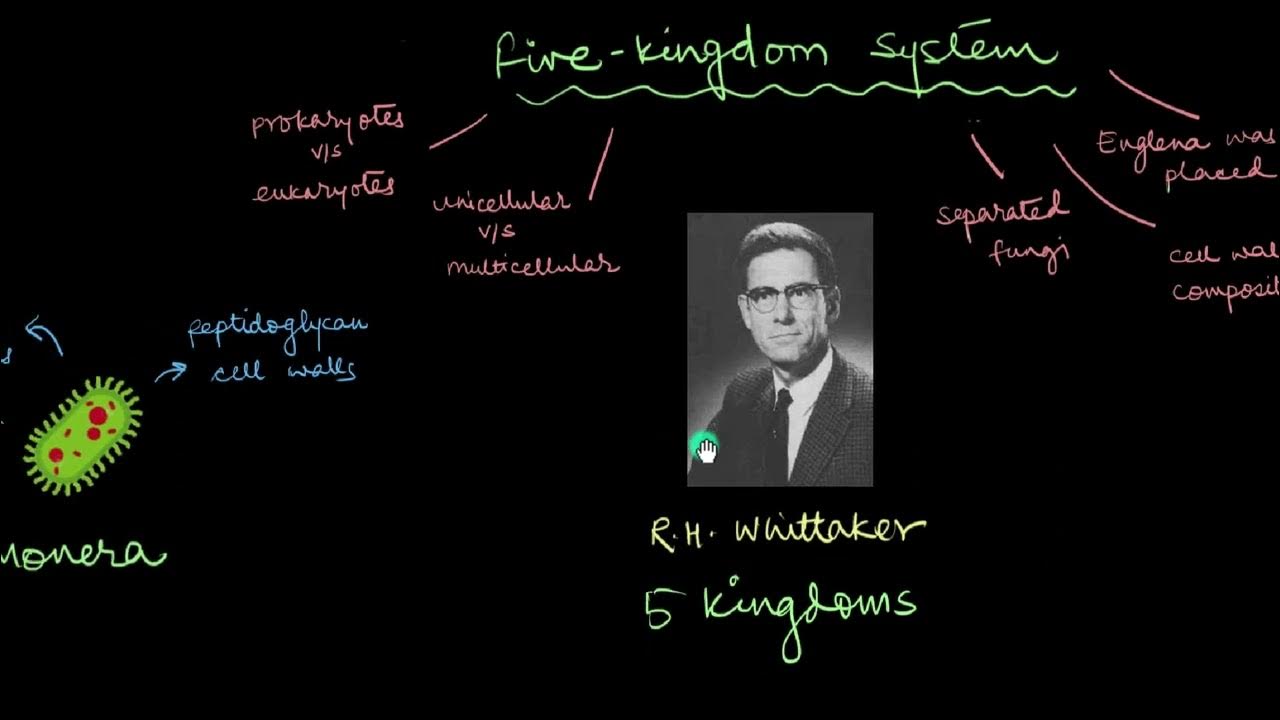Perkembangan Sistem Klasifikasi Makhluk Hidup
Summary
TLDRThis video explores the evolution of the biological classification system, starting with the two-kingdom model proposed by Linnaeus, dividing life into Plantae and Animalia. It then covers the transition to three kingdoms with the introduction of Protista, followed by the four-kingdom model adding Monera. The five-kingdom system introduced Fungi as a separate group, and finally, the six-kingdom model emerged, splitting Monera into Archaebacteria and Eubacteria. This classification system forms the foundation for understanding the diversity of life, with further examples of organisms like bacteria and fungi highlighting their unique characteristics and roles in nature.
Takeaways
- 😀 The biological classification system has evolved from the two-kingdom system to the modern six-kingdom system.
- 😀 The first two-kingdom system, proposed by Linnaeus, categorized organisms into Plantae (plants) and Animalia (animals).
- 😀 The three-kingdom system introduced by Ernst Haeckel added Protista to include unicellular organisms that didn't fit into Plantae or Animalia.
- 😀 The four-kingdom system further expanded the classification by introducing Monera, which included bacteria and other microorganisms.
- 😀 The five-kingdom system, proposed by Robert Whittaker, introduced the Fungi kingdom, which included organisms like mushrooms and molds.
- 😀 The six-kingdom system split the Monera kingdom into two separate kingdoms: Archaebacteria and Eubacteria, based on differences in their cell walls.
- 😀 Archaebacteria are considered primitive bacteria, often found in extreme environments like hot springs, while Eubacteria are more common and widespread.
- 😀 Protista includes both plant-like organisms (like algae) and animal-like organisms (like protozoa), with some species able to photosynthesize.
- 😀 Fungi differ from plants and protists because they cannot photosynthesize and have cell walls made of chitin, not cellulose.
- 😀 The six-kingdom system reflects the increasing understanding of genetic, structural, and environmental differences among organisms.
- 😀 The classification system continues to evolve, with advancements in genetics and molecular biology influencing the way life is categorized.
Q & A
What was the first classification system for organisms proposed by Linnaeus?
-The first classification system proposed by Linnaeus was the two-kingdom system, dividing organisms into Kingdom Plantae (plants) and Kingdom Animalia (animals).
Why were plants and animals grouped into separate kingdoms in the two-kingdom classification?
-Plants were grouped in Kingdom Plantae because they can produce their own food through photosynthesis, while animals were placed in Kingdom Animalia because they are heterotrophic and cannot perform photosynthesis.
What prompted the introduction of the three-kingdom classification system?
-The introduction of the three-kingdom system by Ernst Haeckel was due to the discovery of single-celled organisms that didn’t fit into the Plantae or Animalia kingdoms. These organisms were placed in the new Kingdom Protista.
What is the main characteristic that defines the kingdom Protista?
-The kingdom Protista is characterized by single-celled organisms, some of which may have chlorophyll but do not fit the criteria for Plantae or Animalia.
Why was the four-kingdom classification system proposed by Herbert Copeland?
-Herbert Copeland proposed the four-kingdom system to introduce Kingdom Monera, which included bacteria. This kingdom was necessary because some microorganisms were too small and different from protists, and they could not photosynthesize.
What is the key feature of organisms in the Kingdom Monera?
-Organisms in the Kingdom Monera, such as bacteria, are typically single-celled and do not have the ability to perform photosynthesis.
What caused the creation of the five-kingdom classification system by Robert Whittaker?
-Robert Whittaker created the five-kingdom system to introduce Kingdom Fungi, as fungi differ from plants and protists. They do not photosynthesize, and their cell walls are made of chitin rather than cellulose.
How does the Kingdom Fungi differ from Plantae and Protista?
-Kingdom Fungi differs from Plantae and Protista in that fungi cannot photosynthesize and have a cell wall made of chitin, while plants have cellulose in their cell walls and can photosynthesize.
What changes were made in the six-kingdom classification compared to the five-kingdom system?
-In the six-kingdom classification, the Kingdom Monera was split into two separate kingdoms: Archaebacteria and Eubacteria, based on differences in their cell wall structures.
What distinguishes Archaebacteria from Eubacteria in the six-kingdom system?
-Archaebacteria are considered primitive bacteria with unique cell wall structures, while Eubacteria are more modern and closer to Protista in their characteristics.
Can you name some examples of organisms found in the Kingdom Protista?
-Examples of organisms in the Kingdom Protista include algae, which can be photosynthetic, and protozoa, which are often single-celled organisms.
What role do microorganisms like Escherichia coli and Salmonella play in human health?
-Microorganisms like Escherichia coli and Salmonella are important because they can cause diseases such as food poisoning and infections, highlighting the diversity and impact of bacteria in the environment.
What is the significance of the six-kingdom system in the study of biology?
-The six-kingdom system provides a clearer understanding of the diversity of life by categorizing organisms based on fundamental differences in their structure and metabolism, such as differences in cell wall composition and the ability to photosynthesize.
Outlines

This section is available to paid users only. Please upgrade to access this part.
Upgrade NowMindmap

This section is available to paid users only. Please upgrade to access this part.
Upgrade NowKeywords

This section is available to paid users only. Please upgrade to access this part.
Upgrade NowHighlights

This section is available to paid users only. Please upgrade to access this part.
Upgrade NowTranscripts

This section is available to paid users only. Please upgrade to access this part.
Upgrade NowBrowse More Related Video

Perkembangan Klasifikasi Makhluk Hidup

Klasifikasi Makhluk Hidup (Part 2) "Klasifikasi dan Kunci Determinasi" Kurikulum Merdeka

Systems of Classification | Biological Classification | Biology | Khan Academy

Materi Klasifikasi Makhluk Hidup Kelas 7 SMP

Sistem Klasifikasi 5 Kingdom Makhluk Hidup - Materi IPA Kelas 7

Conheça os 5 Reinos dos seres vivos
5.0 / 5 (0 votes)